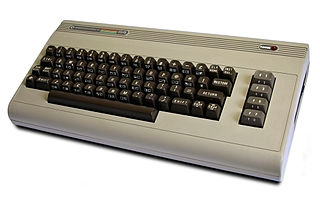There’s a new OEM getting ready to make a consumer desktop offering with Linux preloaded as the default OS. Get ready for the new and improved Commodore 64 running Linux. Wouldn’t it be a gas if Linux on the desktop finally took off due to it’s being the default operating system on a Commodore?
For those of you too young to have any experience with Commodore, let me offer this little description from our friends over at Wikipedia:
“The Commodore 64 is an 8-bit home computer introduced by Commodore International in January 1982. Volume production started in the spring of 1982, with machines being released on to the market in August at a price of US $595. Preceded by the Commodore VIC-20 and Commodore MAX Machine, the C64 features 64 kilobytes of memory with sound and graphics performance that were superior to IBM-compatible computers of that time. It is commonly known as the C64 or C=64 (after the graphic logo on the case) and occasionally as the CBM 64 (for Commodore Business Machines), or VIC-64.[4] It has also been affectionately nicknamed the ‘breadbox’ and ‘bullnose’ due to the shape and color of the first version of its casing.
“During the C64’s lifetime, sales totaled between 12.5 and 17 million units, making it the best-selling single personal computer model of all time. For a substantial period of time (1983–1986), the C64 dominated the market with between 30% and 40% share and 2 million units sold per year, outselling the IBM PC clones, Apple Inc. computers, and Atari 8-bit family computers. Sam Tramiel, a former Atari president and the son of Commodore’s founder, said in a 1989 interview ‘When I was at Commodore we were building 400,000 C64s a month for a couple of years.'”
In other words, back in the 1980s and through the early 90s, the Commodore 64 was pretty much the “must have” computer for the home enthusiast. They came loaded with software, upwards of 10,000 titles being available, which included everything from office productivity applications to games. So popular were some of these apps that even today people download emulators to run old Commodore software on their Windows boxes. No less than Linus Torvalds cut his teeth writing code for a Commodore VIC-20, the predecessor to the 64, that he inherited from his grandfather. Even AOL got their start as Quantum Link, an online service for Commodore computers.

The Original Commodore 64
Although there are still many Commodore enthusiasts regularly firing up their old 64s, the Commodore pretty much went the way of the passenger pigeon in 1994 when Commodore International declared bankruptcy following a mix of bad business decisions and competition from IBM, Apple and Microsoft. Over the years there have been many attempts to revive the brand, but it’s mainly looked like a dead horse being flogged. But there’s another attempt in the works, and this one might, just might, work. Last September Barry Altman, president and CEO of Commodore USA, purchased the Commodore brand, partly to revive the Commodore 64.
In an article in Friday’s New York Times he explains why:
“‘Thirty years ago computers were an all-in-one product, with the keyboard, memory and components built inside,’ Mr. Altman explained. ‘Over the years that has changed, and we believe there is a huge potential to revive the early format.'”
Make no mistake, this will not be your father’s Commodore, but will be a computer fully designed for modern user with only the form factor remaining the same. This new computer will come with a 1.8 gigahertz dual-core processor, an optional Blu-ray player and built-in ethernet and HDMI ports. Prices range from $250 for a bare bones model to $895 for a heavily loaded version.
Now, here’s the good part, the machine comes with Linux. A machine bought today will come with Ubuntu, but they’re working on their own Linux version, Commodore OS 1.0, which will have emulation functionality for running classic Commodore apps. Current purchasers will receive the new OS, complete with classic Commodore game package, as soon as it’s ready for prime time.
So what about a Windows based system? The company’s web site only has this to say: “…you can even install and use the latest versions of Windows if you really feel you need to.”
I’m not sure that this is going to fly – but it might. There are certainly enough old Commodore fans out there to help get some interest going and, as CEO Altman opined to The Times: “There are a lot of really young computer users who want to own a retro-looking computer.” I’m really hoping it makes it. I have to love a computer company that tells their customers that they can install Windows only “if you really feel you need to.”
Christine Hall has been a journalist since 1971. In 2001, she began writing a weekly consumer computer column and started covering Linux and FOSS in 2002 after making the switch to GNU/Linux. Follow her on Twitter: @BrideOfLinux







“Prices range from $250 for a bare bones model to $895 for a heavily loaded version.”
I don’t think it’s going to fly, either. First, Commodore OS 1.0 is still in the development stages. Second, so is the hardware. THEY HAVE NO HARDWARE FOR SALE AT THIS TIME. From what I can tell by perusing their forum, all they currently have is a retro case, minus any real hardware or operating system.
I’ve owned two C=64s, one CD32, one A2000, and I currently own two A4000s. I’ve used both server and desktop Linux versions for some years now. I can still remember when my A2000 would “run circles around” ANYTHING from Apple or Win/Tel at the time. But that was then and this is now.
Unfortunately, it looks as though Commodore USA’s penchant for smoke and mirrors has resurfaced once again. They currently have NOTHING concrete for sale. And from what I can gather, their hardware “product” will be overpriced commodity hardware housed in cutesy-looking retro cases.
Commodore’s ability to innovate seems to have gone out the door when they originally closed their doors, due to bankruptcy. I hope I’m wrong. But if the past few years are any indication of future performance, …